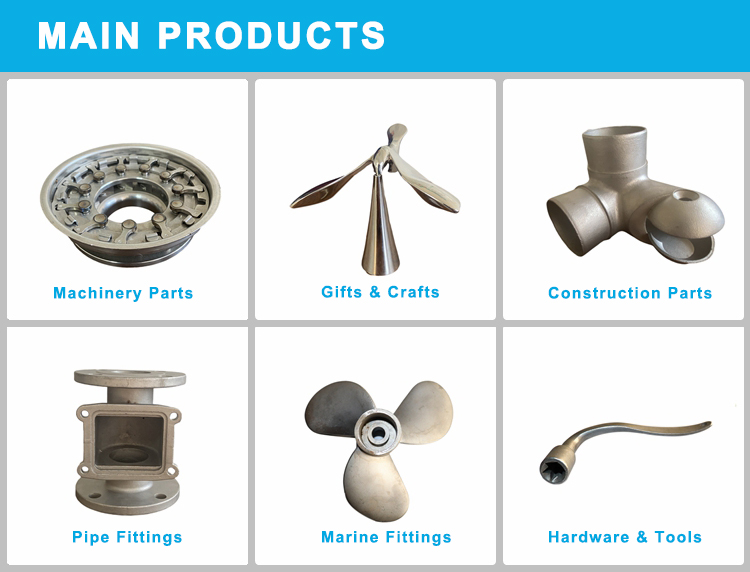
OEM Investment Casting,Precisiom Casting, Lost wax casting,CNC Machining parts
| Name | OEM Investment casting, Lost wax casting, Silica sol casting,CNC Machining parts |
| Main material | stainless steel,carbon steel,steel |
| Process | Casting +Machining(if Need)+surface Treatment |
| Trial sample time | 7-10 days after confirmation |
| Service Project | To provide production design, production and technical service, mould development and processing, etc |
| Surface Treatment | Anodizing,Sandblasting,Painting,Powder coating,Plating,Silk Printing,Brushing,Polishing,Laser Engraving |
| Drawing Format | PRO/E, Auto CAD, Solid Works,IGS,UG, CAD/CAM/CAE |
| Testing Machine | Digital Height Gauge, caliper, Coordinate measuring machine, projection machine, roughness tester, hardness tester and so on |
| Packing | Eco-friendly pp bag / EPE Foam /Carton boxes or wooden boxes As customer's specific requirements |
| Delivery | 35-45 days |
Main production

1. Different properties
Cast steel: Cast steel is a kind of cast alloy, with iron and carbon as the main elements, carbon content between 0 and 2%.
Carbon steel: carbon steel is an iron carbon alloy with carbon content of 0.0218% to 2.11%, generally also contains a small amount of silicon, manganese, sulfur, phosphorus.
2. Different characteristics
Cast steel: 304, 316 cast steel is the most widely used stainless steel, both are austenitic cast steel, non-magnetic or weak magnetic. And 430, 403, 410 are austenitic - ferritic stainless steel, magnetic.
Carbon steel: general carbon steel with higher carbon content is the greater the hardness, the higher the strength, but the plasticity is low.
3. Different classifications
Cast steel: according to the characteristics of use is divided into: casting tool steel. Casting tool steel can be divided into casting tool steel and casting die steel; Cast special steel. Casting special steel can be divided into casting stainless steel, casting heat resistant steel, casting wear resistant steel, casting nickel base alloy, etc.;
Cast steel for engineering and structural purposes. Cast steel for engineering and structure can be divided into cast carbon structural steel and cast alloy structural steel. Cast alloy steel. It can be divided into casting low alloy steel, casting medium alloy steel and casting high alloy steel.
Carbon steel: carbon steel can be divided into three types of carbon structural steel, carbon tool steel and free cutting structural steel, carbon structural steel is divided into engineering construction steel and machine manufacturing structural steel.
Contact: Terry Zhang
Phone: +86-13515399527 (Whatsapp/wechat)
E-mail: zhang@senjiagroup.com
Add: No 106 Jinqueshan Road, Linyi, China